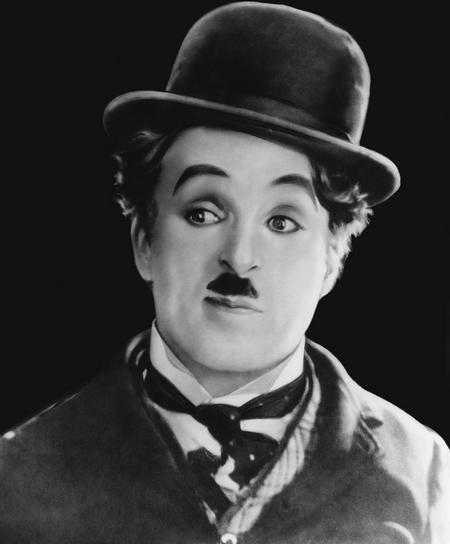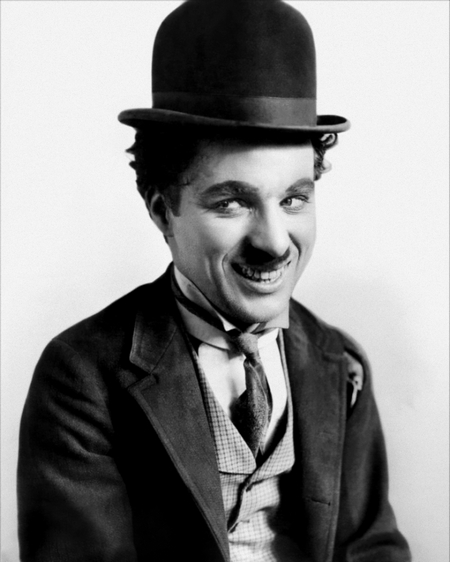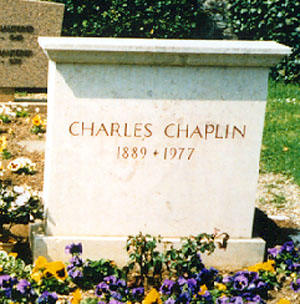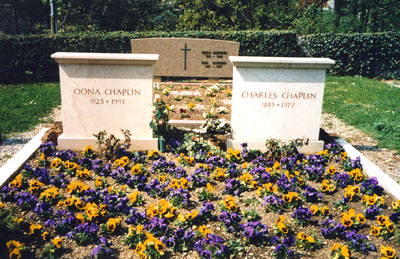Charlie Chaplin (Charlie Chaplin)
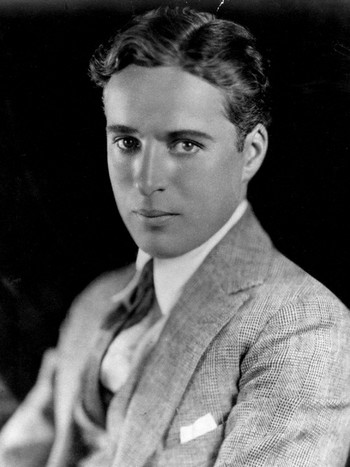
Charles Spencer Chaplin was born on 16 April 1889. He was the only child of singers Charles Chaplin, Sr. and Hannah Hill. There is no official record of his birth, although Chaplin believed he was born at East Street, Walworth, in South London. His mother and father had married four years previously, at which time Charles Sr. became the legal carer of Hannah’s illegitimate son, Sydney John. At the time of his birth, Chaplin’s parents were both music hall entertainers. Hannah, the daughter of a shoemaker, had a brief and unsuccessful career under the stage name Lily Harley, while Charles Sr., a butcher’s son, was a popular singer. Chaplin’s parents were estranged by around 1891. In 1892, Hannah gave birth to a third son – George Wheeler Dryden – fathered by the music hall entertainer Leo Dryden. The child was taken by Dryden at six months old, and did not re-enter Chaplin’s life for 30 years. Chaplin’s childhood was fraught with poverty and hardship, making his eventual trajectory “the most dramatic of all the rags to riches stories ever told” according to his authorised biographer David Robinson. Chaplin’s early years were spent with his mother and brother Sydney in the London district of Kennington; Hannah had no means of income, other than occasional nursing and dressmaking, and Chaplin Sr. provided no support for his sons. As the situation deteriorated, Chaplin was sent to a workhouse when he was seven years old. The council housed him at the Central London District School for paupers, which Chaplin remembered as “a forlorn existence”. He was briefly reunited with his mother 18 months later, before Hannah was forced to readmit her family to the workhouse in July 1898. The boys were promptly sent to Norwood Schools, another institution for destitute children. In September 1898, Chaplin’s mother was committed to Cane Hill mental asylum – she had developed a psychosis seemingly brought on by an infection of syphilis and malnutrition. For the two months she was there, Chaplin and his brother Sydney were sent to live with their father, whom the young boys scarcely knew. Charles Sr. was by then a severe alcoholic, and life there was bad enough to provoke a visit from the National Society for the Prevention of Cruelty to Children. Chaplin’s father died two years later, at 38 years old, from cirrhosis of the liver. Hannah entered a period of remission, but in May 1903 became ill again. Chaplin, then 14, had the task of taking his mother to the infirmary, from where she was sent back to Cane Hill. He lived alone for several days, searching for food and occasionally sleeping rough, until Sydney – who had enrolled in the Navy two years earlier – returned. Hannah was released from the asylum eight months later, but in March 1905 her illness returned, this time permanently. “There was nothing we could do but accept poor mother’s fate,” Chaplin later wrote, and she remained in care until her death in 1928.
Between his time in the poor schools and his mother succumbing to mental illness, Chaplin began to perform on stage. He recalled making his first amateur appearance at five years old, when he took over from Hannah one night in Aldershot. This was an isolated occurrence, but by the time he was nine Chaplin had, with his mother’s encouragement, grown interested in performing. He later wrote: “[she] imbued me with the feeling that I had some sort of talent.” Through his father’s connections, Chaplin became a member of the Eight Lancashire Lads clog-dancing troupe, with whom he toured English music halls throughout 1899 and 1900. Chaplin worked hard, and the act was popular with audiences, but he was not satisfied with dancing and wished to form a comedy act. In the years Chaplin was touring with the Eight Lancashire Lads, his mother ensured that he still attended school, but by age 13 he had abandoned education. He supported himself with a range of jobs, while nursing his ambition to become an actor. At 14, shortly after his mother’s relapse, he registered with a theatrical agency in London’s West End. The manager sensed potential in Chaplin, who was promptly given his first role as a newsboy in H. A. Saintsbury’s Jim, a Romance of Cockayne. It opened in July 1903, but the show was unsuccessful and closed after two weeks. Chaplin’s comic performance, however, was singled out for praise in many of the reviews. Saintsbury secured a role for Chaplin in Charles Frohman’s production of Sherlock Holmes, where he played Billy the pageboy in three nationwide tours. His performance was so well received that he was called to London to play the role alongside William Gillette, the original Holmes. “It was like tidings from heaven,” Chaplin recalled. At 16 years old, Chaplin starred in the play’s West End production at the Duke of York’s Theatre from October to December 1905. He completed one final tour of Sherlock Holmes in early 1906, before leaving the play after more than two-and-a-half years.
Six months into the second American tour, Chaplin was invited to join the New York Motion Picture Company. A representative who had seen his performances thought he could replace Fred Mace, a star of their Keystone Studios who intended to leave. Chaplin thought the Keystone comedies “a crude mélange of rough and rumble”, but liked the idea of working in films and rationalised, “Besides, it would mean a new life.” He met with the company, and signed a $150-per-week contract in September 1913. Chaplin arrived in Los Angeles, home of the Keystone studio, in early December 1913. His boss was Mack Sennett, who initially expressed concern that the 24-year-old looked too young. He was not used in a picture until late January, during which time Chaplin attempted to learn the processes of filmmaking. The one-reeler Making a Living marked his film acting debut, and was released on 2 February 1914. Chaplin strongly disliked the picture, but one review picked him out as “a comedian of the first water.” For his second appearance in front of the camera, Chaplin selected the costume with which he became identified. He described the process in his autobiography: “I wanted everything to be a contradiction: the pants baggy, the coat tight, the hat small and the shoes large … I added a small moustache, which, I reasoned, would add age without hiding my expression. I had no idea of the character. But the moment I was dressed, the clothes and the makeup made me feel the person he was. I began to know him, and by the time I walked on stage he was fully born.”The film was Mabel’s Strange Predicament, but “the Tramp” character, as it became known, debuted to audiences in Kid Auto Races at Venice – shot later than Mabel’s Strange Predicament but released two days earlier. Chaplin adopted the character as his screen persona, and attempted to make suggestions for the films he appeared in. These ideas were dismissed by his directors. During the filming of his eleventh picture, Mabel at the Wheel, he clashed with director Mabel Normand and was almost released from his contract. Sennett kept him on, however, when he received orders from exhibitors for more Chaplin films. Sennett also allowed Chaplin to direct his next film himself, after Chaplin promised to pay $1,500 if the film was unsuccessful. Caught in the Rain, issued 4 May 1914, was Chaplin’s directorial debut and was highly successful. Thereafter he directed almost every short film in which he appeared for Keystone, at the rate of approximately one per week, a period which he later remembered as the most exciting time of his career. Chaplin’s films introduced a slower form of comedy than the typical Keystone farce, and he developed a large fan base. In November 1914, he had a supporting role in the first feature length comedy film, Tillie’s Punctured Romance, directed by Sennett and starring Marie Dressler, which was a commercial success and increased his popularity. When Chaplin’s contract came up for renewal at the end of the year, he asked for $1,000 a week – an amount Sennett refused as too large.
The Essanay Film Manufacturing Company sent Chaplin an offer of $1,250 a week with a signing bonus of $10,000. He joined the studio in late December 1914, where he began forming a stock company of regular players, including Leo White, Bud Jamison, Paddy McGuire and Billy Armstrong. He soon recruited a leading lady – Edna Purviance, who Chaplin met in a cafe and hired on account of her beauty. She went on to appear in 35 films with Chaplin over eight years; the pair also formed a romantic relationship that lasted into 1917. Chaplin asserted a high level of control over his pictures, and started to put more time and care into each film. There was a month-long interval between the release of his second production, A Night Out, and his third, The Champion. The final seven of Chaplin’s 14 Essanay films were all produced at this slower pace. Chaplin also began to alter his screen persona, which had attracted some criticism at Keystone for its “mean, crude, and brutish” nature. The character became more gentle and romantic; The Tramp (April 1915) was considered a particular turning point in his development. The use of pathos was developed further with The Bank, in which Chaplin created a sad ending. Robinson notes that this was an innovation in comedy films, and marked the time when serious critics began to appreciate Chaplin’s work. At Essanay, writes film scholar Simon Louvish, Chaplin “found the themes and the settings that would define the Tramp’s world.” During 1915, Chaplin became a cultural phenomenon. Shops were stocked with Chaplin merchandise, he was featured in cartoons and comic strips, and several songs were written about him. In July, a journalist for Motion Picture Magazine wrote that “Chaplinitis” had spread across America. As his fame grew worldwide, he became the film industry’s first international star. When the Essanay contract ended in December 1915, Chaplin – fully aware of his popularity – requested a $150,000 signing bonus from his next studio. He received several offers, including Universal, Fox, and Vitagraph, the best of which came from the Mutual Film Corporation at $10,000 a week.
A contract was negotiated with Mutual that amounted to $670,000 a year, which Robinson says made Chaplin – at 26 years old – one of the highest paid people in the world. The high salary shocked the public and was widely reported in the press. John R. Freuler, the studio President, explained, “We can afford to pay Mr. Chaplin this large sum annually because the public wants Chaplin and will pay for him.” Mutual gave Chaplin his own Los Angeles studio to work in, which opened in March 1916. He added two key members to his stock company, Albert Austin and Eric Campbell, and produced a series of elaborate two-reelers: The Floorwalker, The Fireman, The Vagabond, One A.M. and The Count. For The Pawnshop he recruited the actor Henry Bergman, who was to work with Chaplin for 30 years. Behind the Screen and The Rink completed Chaplin’s releases for 1916. The Mutual contract stipulated that he release a two-reel film every four weeks, which he had managed to achieve. With the new year, however, Chaplin began to demand more time. He made only four more films for Mutual over the first ten months of 1917: Easy Street, The Cure, The Immigrant and The Adventurer. With their careful construction, these films are considered by Chaplin scholars to be among his finest work. Later in life, Chaplin referred to his Mutual years as the happiest period of his career. Chaplin was attacked in the British media for not fighting in the First World War. He defended himself, revealing that he would fight for Britain if called and had registered for the American draft, but he was not summoned by either country. Despite this criticism Chaplin was a favourite with the troops, and his popularity continued to grow worldwide. Harper’s Weekly reported that the name of Charlie Chaplin was “a part of the common language of almost every country”, and that the Tramp image was “universally familiar”. In 1917, professional Chaplin imitators were so widespread that he took legal action, and it was reported that nine out of ten men who attended costume parties dressed as the Tramp. The same year, a study by the Boston Society for Psychical Research concluded that Chaplin was “an American obsession.” The actress Minnie Maddern Fiske wrote that “a constantly increasing body of cultured, artistic people are beginning to regard the young English buffoon, Charles Chaplin, as an extraordinary artist, as well as a comic genius.”
Mutual were patient with Chaplin’s decreased rate of output, and the contract ended amicably. His primary concern in finding a new distributor was independence; Sydney Chaplin, then his business manager, told the press, “Charlie [must] be allowed all the time he needs and all the money for producing [films] the way he wants … It is quality, not quantity, we are after.” In June 1917, Chaplin signed to complete eight films for First National Exhibitors’ Circuit in return for $1 million. He chose to build his own studio, situated on five acres of land off Sunset Boulevard, with production facilities of the highest order. It was completed in January 1918, and Chaplin was given freedom over the making of his pictures. A Dog’s Life, released April 1918, was the first film under the new contract. In it, Chaplin demonstrated his increasing concern with story construction, and his treatment of the Tramp as “a sort of Pierrot”. The film was described by Louis Delluc as “cinema’s first total work of art.” Chaplin then embarked on the Third Liberty Bond campaign, touring the United States for one month to raise money for the Allies of the First World War. He also produced a short propaganda film, donated to the government for fund-raising, called The Bond. Chaplin’s next release was war-based, placing the Tramp in the trenches for Shoulder Arms. Associates warned him against making a comedy about the war but, as he later recalled, “Dangerous or not, the idea excited me.” He spent four months filming the 45-minute-long picture, which was released in October 1918 with great success.
In the mid-1940s, Chaplin was involved in a series of trials that occupied most of his time and significantly affected his public image. The troubles stemmed from his affair with an aspirant actress named Joan Barry, with whom he was involved intermittently between June 1941 and the autumn of 1942. Barry, who displayed obsessive behaviour and was twice arrested after they separated, reappeared the following year and announced that she was pregnant with Chaplin’s child. As Chaplin denied the claim, Barry filed a paternity suit against him. The director of the Federal Bureau of Investigation (FBI), J. Edgar Hoover, who had long been suspicious of Chaplin’s political leanings, used the opportunity to generate negative publicity around him. As part of a smear campaign to damage Chaplin’s image, the FBI named him in four indictments related to the Barry case. Most serious of these was an alleged violation of the Mann Act, which prohibits the transportation of women across state boundaries for sexual purposes. The historian Otto Friedrich has called this an “absurd prosecution” of an “ancient statute”, yet if Chaplin was found guilty, he faced 23 years in jail. Three charges lacked sufficient evidence to proceed to court, but the Mann Act trial began in March 1944. Chaplin was acquitted two weeks later. The case was frequently headline news, with Newsweek calling it the “biggest public relations scandal since the Fatty Arbuckle murder trial in 1921.” Barry’s child, Carole Ann, was born in October 1944, and the paternity suit went to court in February 1945. After two arduous trials, in which the prosecuting lawyer accused him of “moral turpitude”, Chaplin was declared to be the father. The judge refused to accept the medical evidence of blood tests which indicated otherwise, and ordered Chaplin to pay child support until Carole Ann turned 21. Media coverage of the paternity suit was influenced by the FBI, as information was fed to the prominent gossip columnist Hedda Hopper, and Chaplin was portrayed in an overwhelmingly critical light. The controversy surrounding Chaplin increased when, two weeks after the paternity suit was filed, it was announced that he had married his newest protégée, 18-year-old Oona O’Neill – daughter of the American playwright Eugene O’Neill. Chaplin, then 54, had been introduced to her by a film agent seven months earlier. In his autobiography, Chaplin described meeting O’Neill as “the happiest event of my life”, and claimed to have found “perfect love”. Chaplin’s son, Charles Jr., reported that Oona “worshipped” his father. The couple remained married until Chaplin’s death, and had eight children over 18 years: Geraldine Leigh (b. July 1944), Michael John (b. March 1946), Josephine Hannah (b. March 1949), Victoria (b. May 1951), Eugene Anthony (b. August 1953), Jane Cecil (b. May 1957), Annette Emily (b. December 1959), and Christopher James (b. July 1962).
Chaplin claimed that the Barry trials had “crippled [his] creativeness”, and it was some time before he began working again. In April 1946, he finally began filming a project that had been in development since 1942. Monsieur Verdoux was a black comedy, the story of a French bank clerk, Verdoux (Chaplin), who loses his job and begins marrying and murdering wealthy widows to support his family. Chaplin’s inspiration for the project came from Orson Welles, who wanted him to star in a film about the French serial killer Henri Désiré Landru. Chaplin decided that the concept would “make a wonderful comedy”, and paid Welles $5,000 for the idea. Chaplin again vocalised his political views in Monsieur Verdoux, criticising capitalism and arguing that the world encourages mass killing through wars and weapons of mass destruction. Because of this, the film met with controversy when it was released in April 1947; Chaplin was booed at the premiere, and there were calls for a boycott. Monsieur Verdoux was the first Chaplin release that failed both critically and commercially in the United States. It was more successful abroad, and Chaplin’s screenplay was nominated at the Academy Awards. He was proud of the film, writing in his autobiography, “Monsieur Verdoux is the cleverest and most brilliant film I have yet made.” The negative reaction to Monsieur Verdoux was largely the result of changes in Chaplin’s public image. Along with damage of the Joan Barry scandal, he was publicly accused of being a communist. His political activity had heightened during World War II, when he campaigned for the opening of a Second Front to help the Soviet Union and supported various Soviet–American friendship groups. Chaplin attended functions given by Soviet diplomats in Los Angeles. In the political climate of 1940s America, such activities meant Chaplin was considered, as Larcher writes, “dangerously progressive and amoral.” The FBI wanted him out of the country, and early in 1947 they launched an official investigation. Chaplin denied being a communist, instead calling himself a “peacemonger”, but felt the government’s effort to suppress the ideology was an unacceptable infringement of civil liberties. Unwilling to be quiet about the issue, he openly protested the trials of Communist Party members and the activities of the House Un-American Activities Committee. Chaplin received a subpoena to appear before HUAC, but was not called to testify. As his activities were widely reported in the press, and Cold War fears grew, questions were raised over his failure to take American citizenship. Calls were made for him to be deported; Representative John E. Rankin of Mississippi told Congress in June 1947: “His very life in Hollywood is detrimental to the moral fabric of America. [If he is deported] … his loathsome pictures can be kept from before the eyes of the American youth. He should be deported and gotten rid of at once.”
By October 1977, Chaplin’s health had declined to the point that he needed constant care. In the early morning of 25 December 1977, he died at home after suffering a stroke in his sleep. He was 88 years old. The funeral, on 27 December, was a small and private Anglican ceremony, according to his wishes. Chaplin was interred in the Corsier-sur-Vevey cemetery. Among the film industry’s tributes, director René Clair wrote, “He was a monument of the cinema, of all countries and all times … the most beautiful gift the cinema made to us.” Actor Bob Hope declared, “We were lucky to have lived in his time.” On 1 March 1978, Chaplin’s coffin was dug up and stolen from its grave by two unemployed immigrants, Roman Wardas, from Poland, and Gantcho Ganev, from Bulgaria. The body was held for ransom in an attempt to extort money from Oona Chaplin. The pair were caught in a large police operation in May, and Chaplin’s coffin was found buried in a field in the nearby village of Noville. It was re-interred in the Corsier cemetery surrounded by reinforced concrete.
Born
- April, 16, 1889
- Walworth, United Kingdom
Died
- December, 25, 1977
- Corsier-sur-Vevey, Switzerland
Cemetery
- Corsier Cemetery
- Vaud, Switzerland


